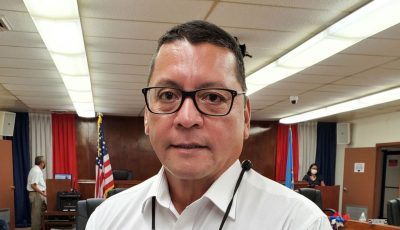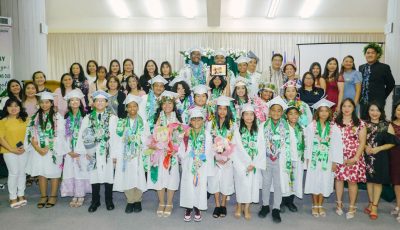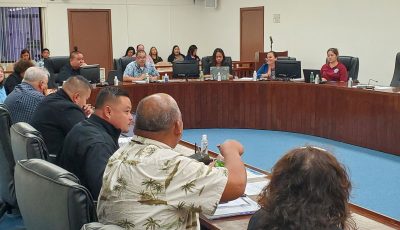Govt’s $32M budget proposal for PSS is 2nd lowest in 12 years
With a weak economy and declining revenue, adequately funding Saipan, Tinian, and Rota public elementary, middle, and high schools has become a challenge.
Reversing the local funding trend for Public School System has been a challenge for the last 11 years now, when government revenue sources for appropriation continue to slip.
It is important, education leaders and advocates contend, that public education’s funding floor is elevated to ensure budget levels do not go below what is needed to effectively and efficiently operate all public schools today.
House Legislative Initiative 18-12, which will be voted on Nov. 4, proposes to increase the 29-year-old constitutional funding ceiling of PSS from 10 percent to 25 percent, of government revenue sources for appropriation.
With the opening of the new school year, fiscal 2015 for PSS will be an uphill battle: at $32,279,996 as proposed by the government, it will essentially be a status quo for the school district in maintaining its current operational activities.
The proposed new fiscal year budget is an increase only of $89,532 from the current appropriation of $32,190.464.
“Despite this slight increase, PSS will essentially have to maintain operational activities as it is doing so today,” PSS finance and budget office declared.
The proposed fiscal year 2015 $32.279 million budget is the second lowest earmarking in the last 11 years or since fiscal year 2013 when government revenue sources for appropriation, among others to PSS, began to dip.
The lowest was in fiscal year 2012. At $31 million then, it resulted in cramped classrooms due to burgeoning teacher-student ratio, double sessions and multiage classes, and rationing of air-conditioning use in classrooms, cafeterias, libraries, and offices.
These were implemented for economic reasons, public education policymakers explained, rather than shutting down schools, suspending services, or furloughing teaching and non-teaching personnel.
On Sept. 2, all 19 public schools and 10 Head Start centers are opening their doors to returning and incoming students. As of Aug. 14, ongoing enrollment and registration on all public schools have surpassed the 10,200 mark.
With still nearly two weeks into the opening, it expected to breach last year’s enrollment number of 10,300-plus. PSS is expecting the enrollment for school year 2014-2015 could become all-time high in a decade.
And to top this coming school year, three new middle schools will open their campuses to students in grades 6, 7, and 8
Unfortunate
Public education advocates have joined the PSS in its appeal to increase the funding for public schools, given that the rising cost of providing services to a growing student population, maintaining services and facilities on Saipan, Tinian, and Rota, salaries and benefits of its employees, and the cost of utilities.
The Inos administration transmitted to the Legislature a $134 million total government spending plan proposal that highlights “a $10.9 million or 8.9 percent increase” from the current fiscal year 2014 budget.
Even with the revenue increase identified by the central government, funding support is not enough to meet the growing needs of public education, one of the four critical and essential government services.
“This is unfortunate as there was quite a significant increase to the CNMI revenue projection,” PSS finance office added.
Given this, PSS will continue to closely monitor personnel expenses.
However, one critical move for PSS is the possibility of not being able to fill needed critical positions. These include highly qualified classroom teachers, which will contribute to class size reduction.
After budgeting for utilities and possible increases of use, due to growing class sizes and enrollment this school year, PSS’ budget for operation will be “very limited again,” PSS finance warned.
On the other hand, the proposed Senate version of $34.872 million will provide additional funding that can be directed to personnel cost and for all 19 public schools and 10 Head Start Centers operations cost.
The Senate’s budget version for PSS is a revision of the governor’s budget proposal that was transmitted to the lower house. This gives the school district a little wiggle room.
“It is not the desired $40 million but it is a better proposal than the current [original] version,” PSS pointed out.
It is likely that both legislative chambers will create a joint budget committee to address the budgetary amendments before reaching a compromise.
In fiscal year 2003, funding for PSS was at $37.23 million and this figure continued on until fiscal year 2006. By fiscal 2007 it slightly dropped to $36.7 million, and further slipped to $34.5M in fiscal 2008, until it nosedived to $31 million in 2012. (PSS)





























